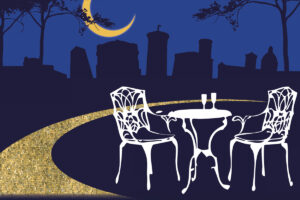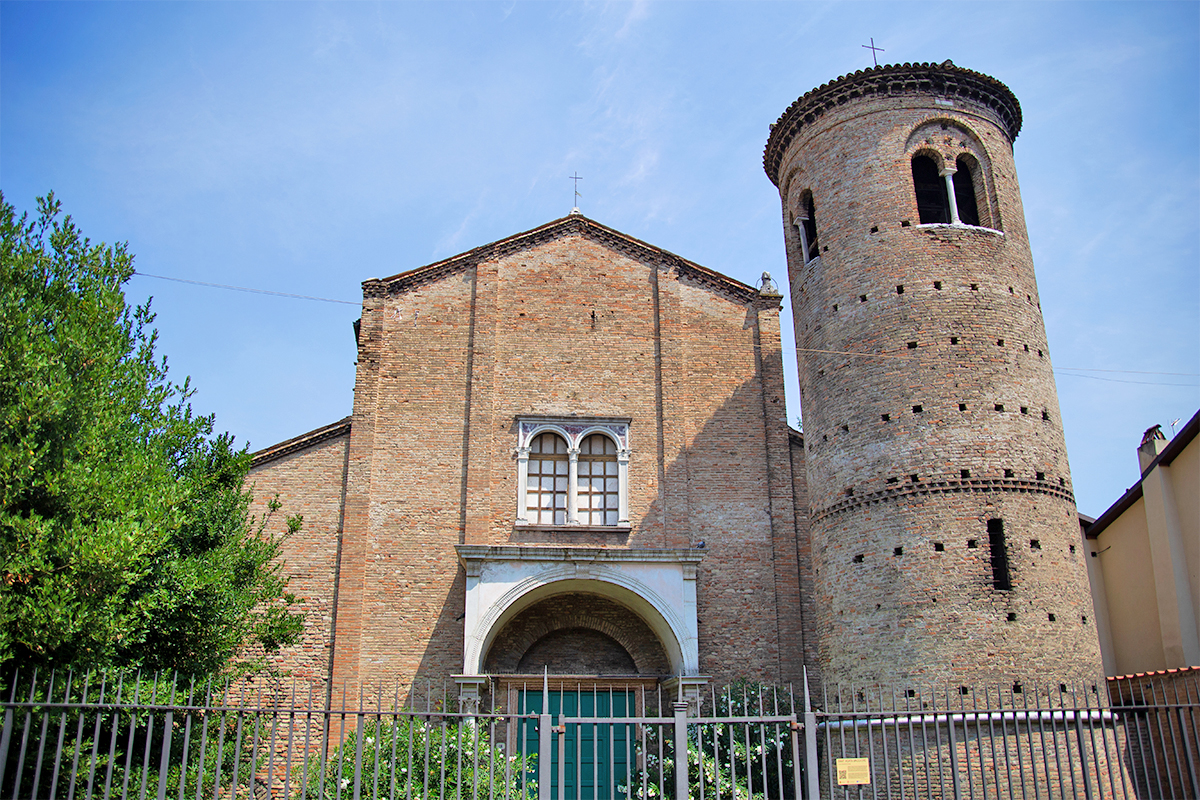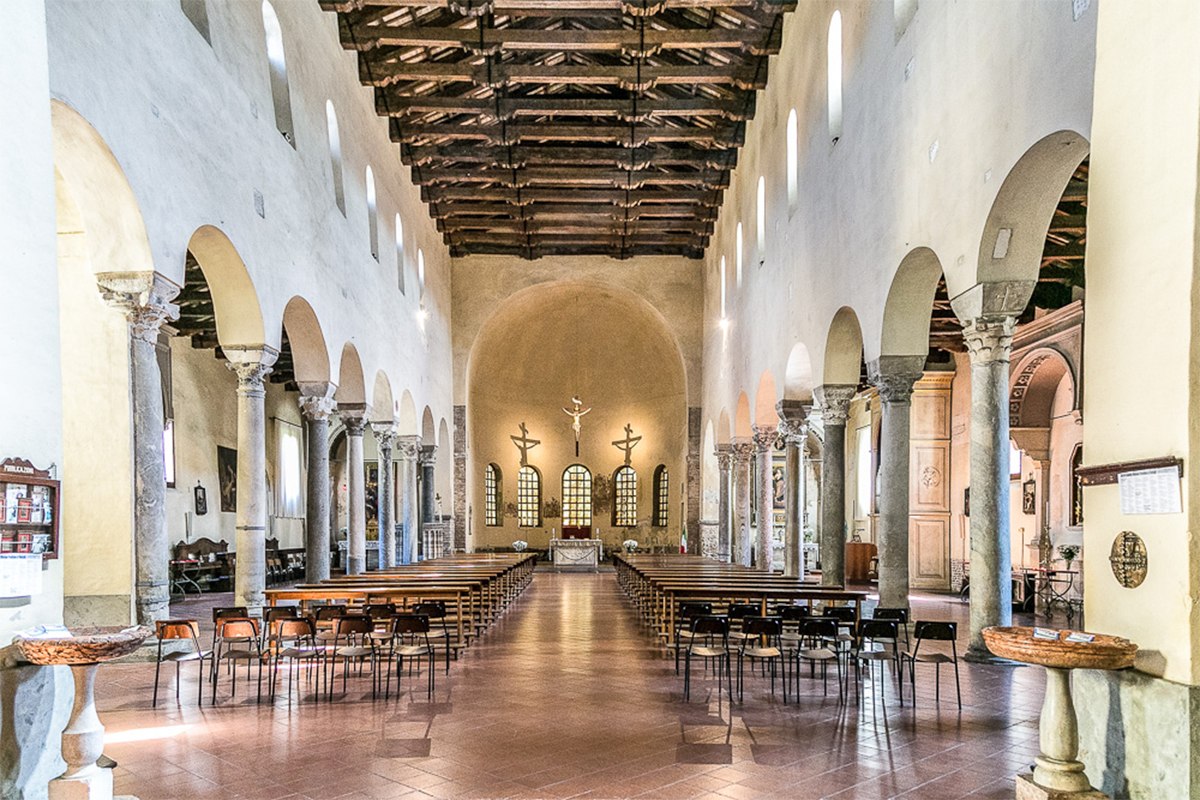Located in the historical centre of Ravenna, just a few steps away from the Basilica of San Francesco and Dante’s Tomb is the BASILICA OF SANT’AGATA MAGGIORE, one of the oldest ones in the city.
A journey through history
The church was erected in the 5th century AD along the Padenna river, an ancient and no-longer-existent branch of the Po river that once flowed on the line of today’s Via Mazzini.
Just like the most famous Basilica of San Vitale, this one was built under Bishop Peter II (494-519), whose monogram can still be seen in the central nave. The real founder of the basilica seems to be Bishop John I (477-494), though.
The apse was probably built in the following century, under Bishop Agnello (556-569), thanks to the contribution of Giuliano l’Argentario, banker and patron who financially participated in the construction of other important buildings, as Basilica of San Vitale, Basilica of Sant’Apollinare in Classe and Church of San Michele in Africisco.
The church underwent several restoration works over time. The green area surrounding it (and that once served as cemetery) once hosted a four-sided portico, that was then replaced with a circular bell tower during the 16th century (1560). An earthquake in 1688 destroyed the mosaic decoration of the apse, and the floor was then raised by 2,5 metres.
During the renovation works carried out by Giuseppe Gerola between 1913 and 1918, the facade was enriched by a remarkable portico made of white stone coming from the former Church of San Niccolò and coeval with the bell tower; and the overlaying mullioned window, giving back to the building the original early-Christian atmosphere.
Today, between Via Mazzini and the facade of the church, it is possible to admire a small four-sided garden located in the place of the ancient four-sided portico. It is still possible to admire the remains of some columns and more than fourteen ancient sarcophagi, originally housed inside the church.
The inside of the basilica
The basilica has three naves separated by two rows of ten columns surmounted by pulvinos and Corinthian capitals dating back to the 6th century. Among them, an ambon made of gray/green Greek marble stands out.
At the end of the central nave, the apse is polygonal on the outside and semi-circular on the inside. In the middle, it is possible to admire the painting of the artist from Ravenna Luca Longhi (1546) depicting Saint Agatha between Saint Catherine of Alexandria and Saint Cecilia. Nearby, an ancient urn preserves the ashes of Saint Sergius and Bishop Agnello.
This church was once decorated with mosaics (see focus) that were destroyed over time and replaced with frescoes that were then destroyed in their turn.








